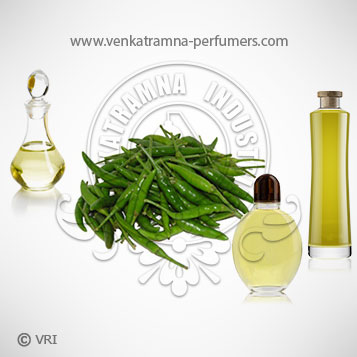
| Botanical Name | N/A |
| Common Name | Capsaicin, Pepper oil |
| Country of Origin | South America, India |
| Solubility | Soluble in oil, insoluble in water |
| Specific Gravity | Not Applicable |
| Optical Rotation | Not Applicable |
| Refrective Index | Not Applicable |
| PlantPart | Fruit |
| Bland With | A habanero chili oil and Capsaicin powder |
| CAS No | Not Applicable |
| Flash Point | Not Applicable |
| Extraction Method | Solvent Extraction |
These are the important component of chili peppers, which are plants belonging to the genus Capsicum. Suitable for mammals, they are produced as a secondary metabolite by chili pepers..
Chili peppers have been a part of the human diet in the Americas since at least 7500 BC. There is archaeological evidence at sites located in southwestern Ecuador that chili peppers were domesticated more than 6000 years ago,[6][7] and were one of the first self-pollinating crops cultivated in Central and South America.
Color : Orange, Green,
Aroma : Straw, Veggie, Lightly Spicy
Capsaicin powder and Oleoresin Capsicum.
Playing an active role in food industry, these are commonly used in food products to add spice or "heat." However, these are also used in topical ointments to relieve the pain and treat diseases like heartburn, heart disease, psoriasis and to reduce itching and inflammation effects.